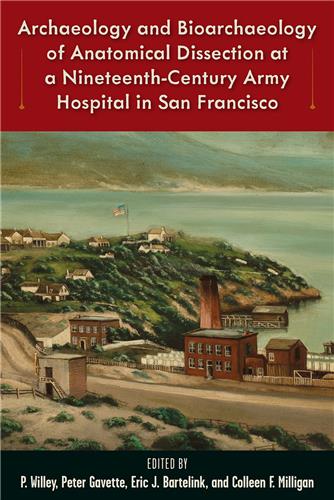Excavations at cities including New York and Philadelphia reveal that slavery was a crucial part of the expansion of urban life as late as the 1840s. The case studies in this book also show that enslaved African-descended people frequently staffed suburban manor houses and agricultural plantations. Moreover, for free blacks, racist laws such as the Fugitive Slave Act of 1850 limited the experience of freedom in the region. Delle explains how members of the African diaspora created rural communities of their own and worked in active resistance against the institution of slavery.
Search Results for 'forall x'
1842 results for 'forall x'
Please note that while you may order forthcoming books at any time, they will not be available for shipment until shortly before publication date
The two volumes of Bioarchaeology of the Southwest bring together more than 100 years of research into the lives of the ancient people of the Southwest United States and Northwest Mexico. Volume 1 contains chapters that range from Colorado to central New Mexico and the Lower Pecos region of Texas.
This volume uses historical, archaeological, and bioarchaeological analysis to study and understand a nineteenth-century medical waste pit discovered at the former Army hospital at Point San Jose in San Francisco.
While bus boycotts, sit-ins, and other acts of civil disobedience were the engine of the civil rights movement, the law was a primary context. Lawyers played a key role amid profound social upheavals, and the twenty-six contributors to this volume reveal what it was like to be a southern civil rights lawyer in this era.
Any observer of Dominican political and literary discourse will quickly notice the prevalence of certain notions of hyper-masculinity. In this extraordinary work, Maja Horn argues that these gender conceptions became ingrained during the dictatorship (1930-1961) of Rafael Leonidas Trujillo, as well as through the U.S. military occupation that preceded it.
Clune and Stringfield use a wide range of historical and archaeological records, spiced with traditional period recipes, to provide a unique look into the daily lives of the people who endured hardship, disease, and hurricanes to settle the Gulf coast frontier. The result is a highly readable account of a city with a rich and fascinating past.
Contributors to this landmark volume demonstrate that ancestor veneration was about much more than claiming property rights: the spirits of the dead were central to domestic disputes, displays of wealth, and power and status relationships.











